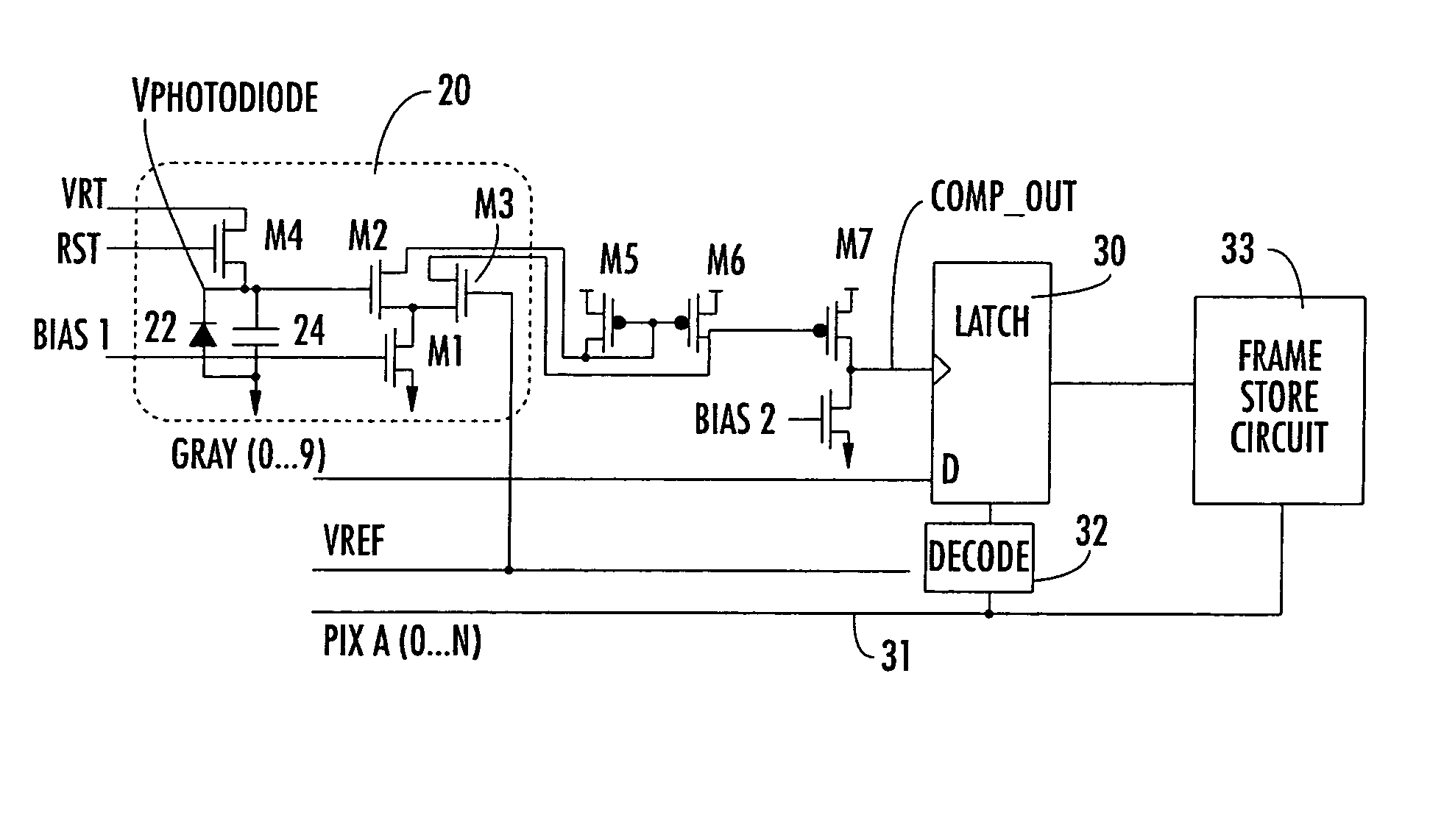Solid state image sensor
a solid-state image and sensor technology, applied in the field of image sensors, can solve the problems of reducing the ability of the pixel to collect photon-generated electrons, and severely reducing sensitivity
- Summary
- Abstract
- Description
- Claims
- Application Information
AI Technical Summary
Problems solved by technology
Method used
Image
Examples
Embodiment Construction
[0018]FIG. 1 shows a prior art approach to an image sensor having in-pixel circuitry such as an A-D converter. The sensor is formed on a P-type epitaxial layer 12 overlying a P-type substrate 10. The top part of the P-type epitaxial layer 12 is doped to provide the circuit components, namely an N-well 14 forming a collection node, NMOS transistors in a P-well 16, and PMOS transistors in an N-well 18.
[0019] For correct operation, the P-well 16 is biased to Vss (ground / 0V), and the N-well is biased to Vdd, typically 3.3V or 1.8V. The collection node 14 is biased to a voltage between Vss and Vdd.
[0020] Light is absorbed by the silicon at a depth which is wavelength dependent. Typically, visible light generates a substantial number of electrons at a depth that is greater than the wells 14, 16 and 18. The collection node 14 as shown in FIG. 1 will collect electrons that are generated directly beneath it. The electrons which are generated close to the border of the collection node 14 an...
PUM
 Login to View More
Login to View More Abstract
Description
Claims
Application Information
 Login to View More
Login to View More - R&D
- Intellectual Property
- Life Sciences
- Materials
- Tech Scout
- Unparalleled Data Quality
- Higher Quality Content
- 60% Fewer Hallucinations
Browse by: Latest US Patents, China's latest patents, Technical Efficacy Thesaurus, Application Domain, Technology Topic, Popular Technical Reports.
© 2025 PatSnap. All rights reserved.Legal|Privacy policy|Modern Slavery Act Transparency Statement|Sitemap|About US| Contact US: help@patsnap.com



